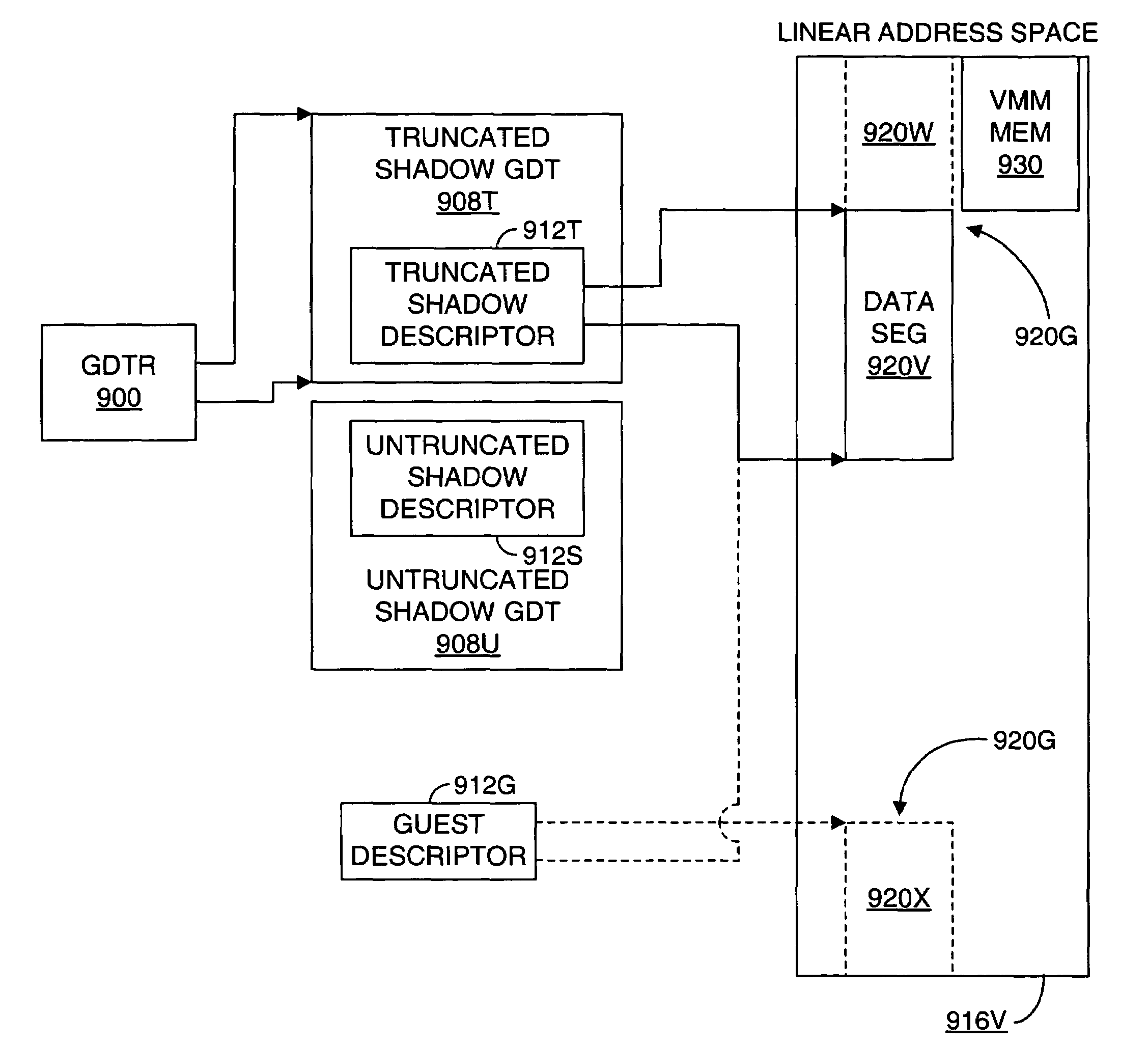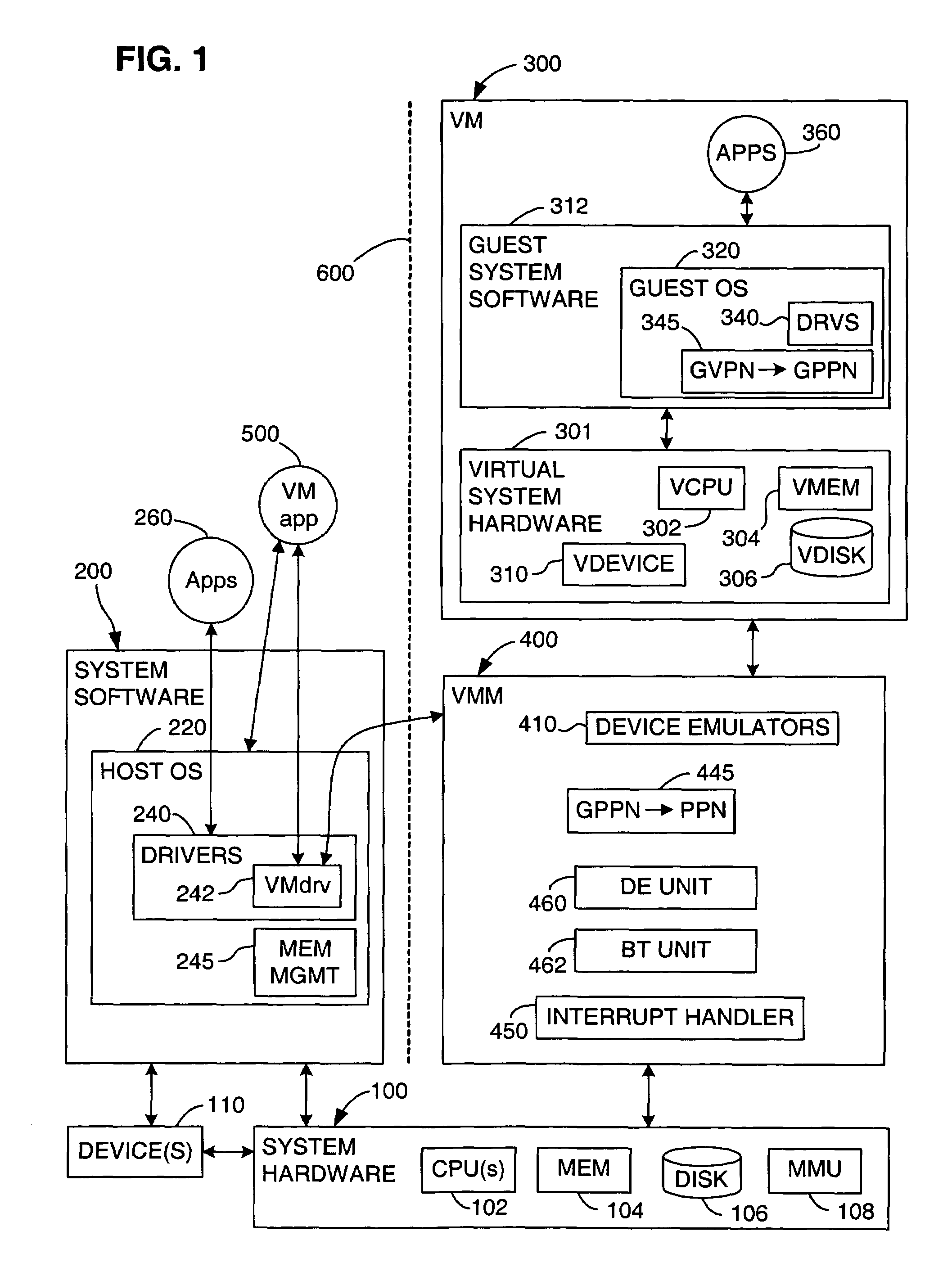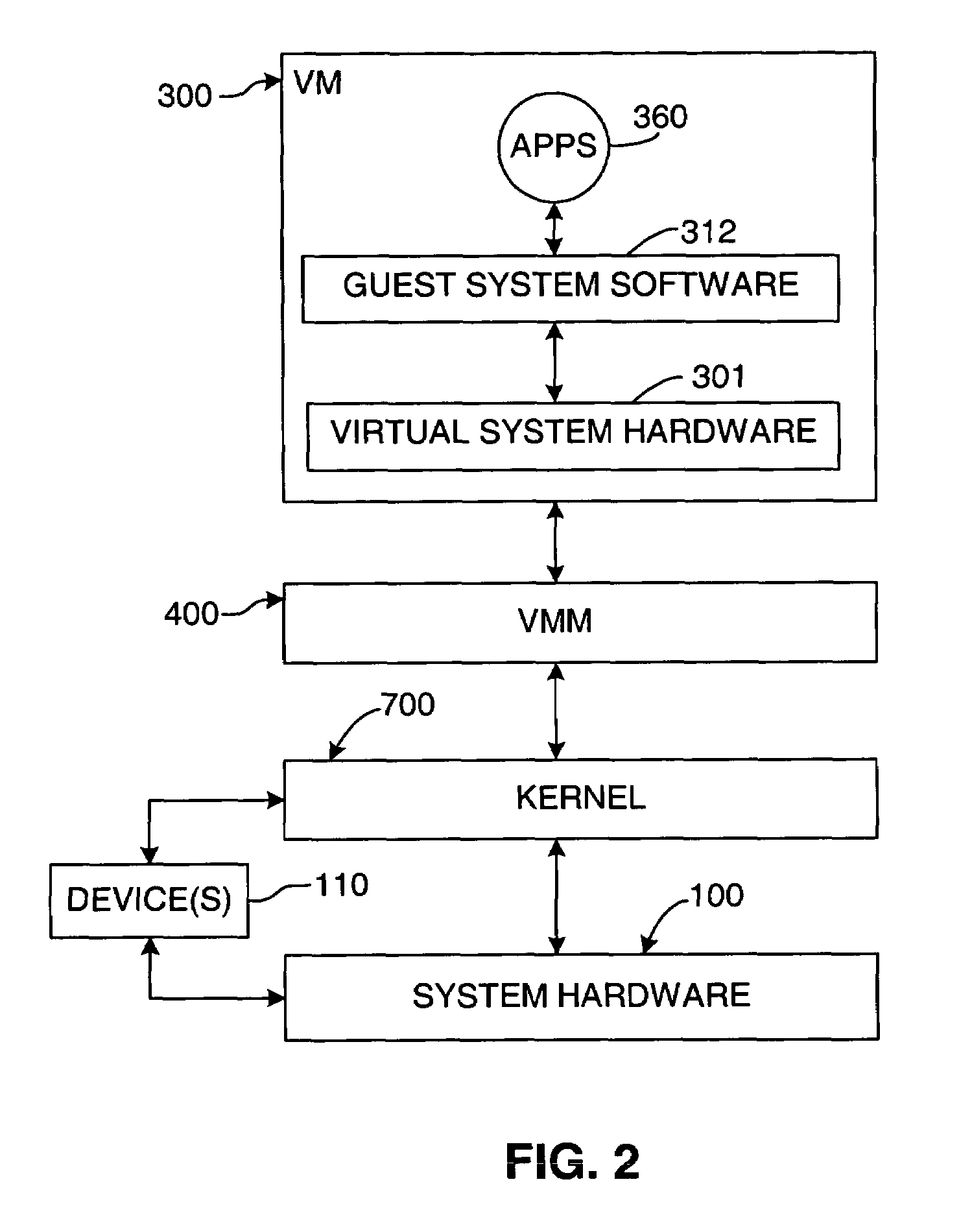Restricting memory access to protect data when sharing a common address space
a technology of restricted memory access and protected data, which is applied in the access/allocation of memory architectures, instruments, computing, etc., can solve the problems of increasing the complexity of vmm and duplicated effort, hardware device by a vmm driver may confuse the host os, and is more difficult to switch between the different contexts of the various vms
- Summary
- Abstract
- Description
- Claims
- Application Information
AI Technical Summary
Benefits of technology
Problems solved by technology
Method used
Image
Examples
first embodiment
[0152]As indicated above, FIGS. 9A and 9B illustrate this invention, which implements a two shadows approach to activating and deactivating the segmented memory protection mechanism. FIGS. 9A and 9B illustrate some of the same items that are shown in FIGS. 5A and 6, while other items shown in FIG. 5A and / or FIG. 6 are not illustrated in FIGS. 9A and 9B for simplicity. Specifically, FIGS. 9A and 9B illustrate the linear address space 916V, including the VMM memory 930 and the guest data segment 920G, which comprises the first data segment portion 920V, the second data segment portion 920W and the third data segment portion 920X. FIGS. 9A and 9B also show the guest data descriptor 912G, which defines the guest data segment 920G. The guest data descriptor 912G is stored in the guest GDT 908G (not shown in FIGS. 9A and 9B for simplicity).
[0153]FIGS. 9A and 9B also show a truncated shadow GDT 908T and an untruncated shadow GDT 908U. The truncated shadow GDT 908T is substantially the same...
second embodiment
[0163]FIGS. 10A and 10B illustrate this invention, which implements a lazy detruncation approach to activating and deactivating the segmented memory protection mechanism. FIGS. 10A and 10B also illustrate some of the same items that are shown in FIGS. 5A and 6, while other items shown in FIG. 5A and / or FIG. 6 are not illustrated in FIGS. 10A and 10B for simplicity. Specifically, FIGS. 10A and 10B illustrate the linear address space 916V, including the VMM memory 930 and the guest data segment 920G, which comprises the first data segment portion 920V, the second data segment portion 920W and the third data segment portion 920X. FIGS. 10A and 10B also show the guest data descriptor 912G, which defines the guest data segment 920G. The guest data descriptor 912G is stored in the guest GDT 908G (not shown in FIGS. 10A and 10B for simplicity).
[0164]FIGS. 10A and 10B also show a truncated shadow descriptor 912T and an untruncated shadow descriptor 912S. Unlike the two shadows embodiment of...
third embodiment
[0175]FIGS. 11A and 11B illustrate this invention, which implements a lazy truncation approach to activating and deactivating the segmented memory protection mechanism. FIGS. 11A and 11B also illustrate some of the same items that are shown in FIGS. 5A and 6, while other items shown in FIG. 5A and / or FIG. 6 are not illustrated in FIGS. 11A and 11B for simplicity. Specifically, FIGS. 11A and 11B illustrate the linear address space 916V, including the VMM memory 930 and the guest data segment 920G, which comprises the first data segment portion 920V, the second data segment portion 920W and the third data segment portion 920X. FIGS. 11A and 11B also show the guest data descriptor 912G, which defines the guest data segment 920G. The guest data descriptor 912G is stored in the guest GDT 908G (not shown in FIGS. 11A and 11B for simplicity).
[0176]FIGS. 11A and 11B also show a truncated shadow descriptor 912T and an untruncated shadow descriptor 912S. Like the lazy detruncation embodiment ...
PUM
 Login to View More
Login to View More Abstract
Description
Claims
Application Information
 Login to View More
Login to View More - R&D
- Intellectual Property
- Life Sciences
- Materials
- Tech Scout
- Unparalleled Data Quality
- Higher Quality Content
- 60% Fewer Hallucinations
Browse by: Latest US Patents, China's latest patents, Technical Efficacy Thesaurus, Application Domain, Technology Topic, Popular Technical Reports.
© 2025 PatSnap. All rights reserved.Legal|Privacy policy|Modern Slavery Act Transparency Statement|Sitemap|About US| Contact US: help@patsnap.com



